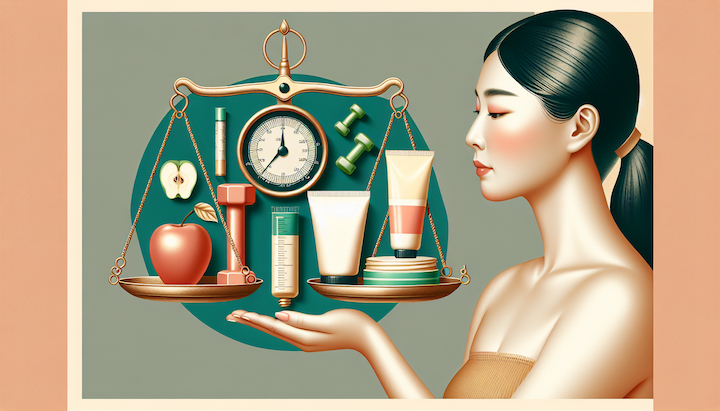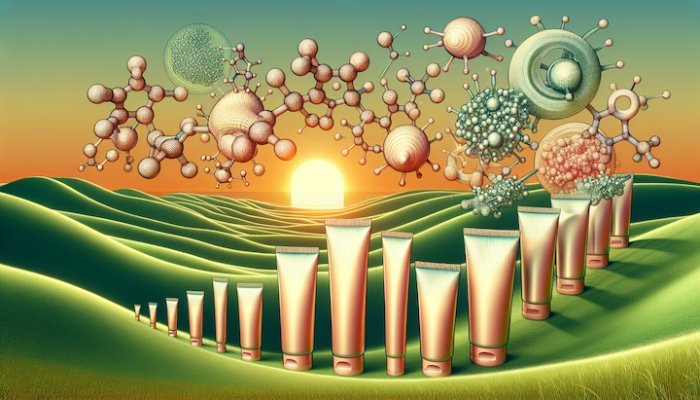Low libido
Low libido (or no libido) is variously described as sexual dysfunction, low sexual desire, poor sexual arousal, sexual disorder, lack of sex drive or a new term, hypoactive sexual desire disorder (HSDD).
But what is libido? The dictionary defines it as 'sexual desire' or 'the energy of the sexual drive as a component of the life instinct'. It's a purely subjective feeling, some have never had the desire for sex, some have a strong desire and enjoy it.
One study says...
"Sexual problems are highly prevalent in both men and women and are affected by, among other factors, mood state, interpersonal functioning and psychotropic medications. Estimates of sexual dysfunction vary from a small percentage to more than 80%."
The causes can be classified as "psychogenic, vasculogenic or organic, neurologic, and endocrinologic".
Not only psychotropic drugs, but corticosteroids can alter sexual behaviour. Studies have found giving pregnant women carrying a male child these drugs during the last trimester, lowers dopamine and testosterone in adulthood. With a subsequent loss of sexual function.
In women, sexual dysfunction can lead to delayed vaginal engorgement, diminished vaginal lubrication, pain or discomfort with intercourse, lowered vaginal sensation and/or orgasm, diminished clitoral sensation and/or orgasm. A low libido does not prevent women from having an orgasm.
After birth, studies have found many women experience low libido, pain with sexual intercourse, vaginal dryness, perineal pain and reduced frequency of orgasm.
In men sexual dysfunction can lead to reduced smooth muscle function leading to impaired flow of blood to the corpora, impaired synthesis and release of endothelial nitric oxide and a failure of the veno-occlusive mechanism. This leads to erectile dysfunction or impotence, low libido and more.
Drugs given for erectile dysfunction have no effect on desire.
Some of the physical causes are...
- low dopamine
- low progesterone
- low vitamin D
- low testosterone
- low zinc
- hyperlipidaemia
- atherosclerosis
- hypothyroidism
- alcoholism
- drug abuse
- diabetes
- CVD
- drugs such as tranquillisers, antidepressants, antihypertensives
- hair-loss remedies
- hyperprolactinaemia
- hypertension
- obesity
Some psychological causes...
- depression
- post natal depression
- stress
- anxiety
- childhood trauma
- previous sexual abuse or rape
There are many hormones, neurotransmitters and neuropeptides involved in the control of sexual behaviour. Some of these are progesterone, dopamine, acetylcholine, nitric oxide (NO), adrenocorticotropin/alpha-melanocyte stimulating hormone, testosterone, oxytocin, plus prolactin, serotonin and opioid peptides. All facilitate sexual behaviour, except for prolactin, serotonin and the opioids, which inhibit sexual performance leading to low libido. Furthermore, gonadotropin-releasing hormone, corticotropin releasing factor, neuropeptide Y, galanin, cholecystokinin, substance P, hydrogen sulfide (H(2)S), sodium hydrosulfide (NaHS) and vasoactive intestinal peptide may be also involved in the control of sexual behaviour.
Testosterone is commonly regarded as 'the' libido increasing agent in both men and women. Such a simplistic view warrants condemnation, as too many are given TRT in the belief it's the answer, without looking at the effects it has.
Side effects of testosterone treatment in women...
- hirsutism
- scalp hair loss
- acne/spots
- oily skin and hair
- deepened voice
- enlargement of the clitoris
- insulin resistance, metabolic syndrome, and cardiovascular disease
- an increase in visceral fat (visceral adipose tissue or VAT)
- cancer
- an increase in advanced glycation end-products (AGE's)
Side effects of testosterone treatment in men...
- gynaecomastia
- reduction in sperm
- increased oestradiol levels
- decreased HDL levels
- increased manic symptoms
- a rise in DHT
- hair loss
200mg per week testosterone injection is given as a contraceptive to reduce sperm, or the equivalent of 28.5mg/day. 5 to 10mg/day is used by men when applying a testosterone gel, such as Androgel.
Progesterone, but the more commonly used synthetic progestins, also reduce the sperm count. Some contraceptives for men using a combination testosterone and progestin are proving successful.
A reduction in sperm does not cause low libido.
"although a critical level of androgen is functionally available at receptor sites, there appears to be little correlation between plasma testosterone levels and sexual behavior. Both impotent men and hypersexuals may have concentrations within normal range and considerably elevated endogenous testosterone concentrations in a small group of impotent males. Thus, it may turn out that the significance of testosterone in determining libido and potency has been overstated. According to Cooper, as long as a "physiological" minimum is available, the hormone may merely be one of a number of interdependent neurotransmitters, which modulate sexual and reproductive functions. The importance of testosterone for central sexual function such as libido or whether it also has an effect on the end orgasm tissues in the penis is still debated."
The paper ends by saying...
"Progesterone deserves an established multifunctional role on male sexual behavior and thus, may in the future, lead to the development of additional treatments for erectile dysfunction."
A paper on women says...
"It has been proposed that low sexual desire and sexual dysfunction are associated with low blood testosterone levels in women. However, evidence to support this is lacking."
The paper concludes with...
"No single androgen level is predictive of low female sexual function, and the majority of women with low dehydroepiandrosterone sulfate levels did not have low sexual function."
"Even though circulating available androgens have been implicated in several domains of sexual response, they seem to be related weakly to symptoms, such as low sexual desire, poor sexual arousal, orgasm and diminished well-being in postmenopausal women.......... Transdermal T has been shown to be effective at a dose of 300 g/day both in surgically and naturally menopausal women replaced with estrogen or not, without any relevant side-effects. However, the decision to treat postmenopausal women with HSDD with testosterone is mainly based on clinical judgement, after informed consent regarding the unknown long-term risks."
Another study found as women entered menopause there was a decline in sexual function, but there was no significant decline in circulating testosterone levels. Although a total hysterectomy reduces testosterone levels, and in some women TRT can help, but only as a part of the many hormones etc that are needed.
The evidence shows progesterone plays a far greater role in sexual health in both men and women, than otherwise thought.
It's always been believed, and still is by everyone including the medical profession, that progesterone in women is only produced by the corpus luteum after ovulation. But as far back as 1930 it was thought there must be another source.
This was confirmed in the 1960's, and re-confirmed in the 1980's, that there is a surge of progesterone about 50 hours prior to ovulation. This surge comes from the brain. As one paper says...
"This progesterone surge was later learned to be essential for the facilitation of feminine sexual behavior."
In male rats peak progesterone levels coincide with the onset of darkness, a time when typical sexual activity is most intense. Peak levels are greater than five times the nadir levels. Another interesting finding was a decrease in testosterone levels during the evening.
Another study found that sleep-deprived rats had significantly lower testosterone levels but a high frequency of erections. They found that high levels of progesterone reflected the erection pattern. Sleep apnea is strongly associated with erectile dysfunction, there appears a possibility that progesterone could help reverse this.
A further study found that supplementing progesterone in castrated male rats initiated full sexual behaviour, even in the absence of other gonadal steroids. The study found that testosterone alone did not completely restore typical sexual responses in all males unless progesterone levels were high.
Another study found that...
"100 mg/day of progesterone induced the highest proportion of rats displaying penile erection, and restored the frequency of penile erection observed in noncastrated sleep deprived rats."
Oestradiol treatment had no effect.
Prior studies failed to look at the effects of progesterone, commonly thought of as a female hormone. And therefore of no consequence in a male, least of all in sexual activities.
Progesterone is secreted primarily by the ovaries in females, the placenta in pregnant females and the testes in men. Smaller amounts are produced by the adrenal glands, the brain and glial cells. There are no great quantitative differences between men and women until the luteal phase in women when it surges.
It is not a sex hormone, it plays no part in the secondary sexual characteristics which develop at puberty. It is the precursor to the sex hormones oestrogen and testosterone. And to cortisol and aldosterone.
In men progesterone influences spermiogenesis, sperm capacitation/acrosome reaction and testosterone biosynthesis in the Leydig cells.
A study checking the correlation between testosterone, progesterone, and cortisol, found a strong correlation with each in men. But in women, progesterone was positively correlated with testosterone and cortisol, but testosterone and cortisol were uncorrelated.
There's strong evidence that dopamine plays a significant role. Progesterone receptors (PR) act as transcriptional mediators for dopamine, as well as for progesterone. In other words, PR's are needed by dopamine to induce sexual behaviour in both male and female mice.
The most common male sexual dysfunction is premature ejaculation. Dopamine not only facilitates male sexual behaviour, including sexual motivation, arousal and penile erection, but also controls ejaculation. See here.
In Parkinson's disease, where the dopamine pathway has become dysfunctional, the use of dopamine agonists by young men leads to hypersexuality.
Injections of adrenocorticotropin (ACTH) and melanocyte stimulating hormone (MSH) into the hypothalamic periventricular region of the brain causes penile erection.
Cocaine, a potent nervous system stimulant, enhances erections by raising dopamine due to blocking it's reuptake.
Whereas serotonin inhibits sexual behaviour, explaining why SSRIs impair erection, ejaculation, and libido. See here.
Hyperprolactinemia occurs naturally after sexual activities. But continuous elevated prolactin levels cause sexual dysfunction, leading to hypogonadism, low libido and impotence. High prolactin suppresses dopamine production. It can be caused by drugs, kidney failure, hypothyroidism, and by prolactinoma (a brain tumour secreting excess prolactin).
Hyperprolactinemia is treated with drugs which mimic dopamine's action, the most common being bromocriptine and cabergoline. High dopamine suppresses prolactin. The amino acid tyrosine is the precursor to dopamine.
Tyrosine is essential for any stressful situation, cold, fatigue, emotional trauma, prolonged work, sleep deprivation, it improves memory, cognition and physical performance. Lack of protein and stress lower tyrosine levels, with a subsequent reduction in dopamine. A drop in dopamine increases levels of prolactin. Dopamine is essential for a normal sexual response, increased prolactin causes a drop in libido.
The rate limiting step in dopamine synthesis is the enzyme tyrosine hydroxylase. Insufficient levels of vitamin D inhibit tyrosine hydroxylase, resulting in a disturbance in the dopamine pathway.
Other important contributors to a normal sexual function are nitric oxide (NO), hydrogen sulfide (H(2)S) and sodium hydrosulfide (NaHS). These all have significant vasodilatory and smooth muscle relaxant effects in both males and females. Progesterone also has significant vasodilatory and smooth muscle relaxant properties.
The precursor to NO is the amino acid arginine. Whereas the precursors to (H(2)S) and (NaHS) are the amino acids methionine and cysteine. Methionine is in fact the precursor to cysteine.
There appears a possible role of oxytocin in the male sexual response, although the studies are only suggestive of this. Oxytocin causes contractions, so is involved in orgasm.
Erectile dysfunction (ED) can be an important indicator of cardiovascular disease. Before any drug is taken, risk factors for CVD should be checked first and corrected. In all probability the ED will cease to occur. These are diabetes, hypertension, arterial calcification and inflammation in the vascular endothelium.
An erection, likewise the engorgement of the vagina in women, relies on a good supply of blood. If CVD is present this will be severely diminished.
A lack of vitamin D has been found to lead to CVD and diabetes. This nutrient if low, causes the renin-angiotensin-aldosterone system to kick into place, raising blood pressure. Calcified arteries are associated with low vitamin D, as is inflammation.
Calcified arteries are also caused by low vitamin K and magnesium. Both important co-factors to vitamin D, ensuring deposition of calcium in bones, and preventing it's deposition in arterial plaque. Excess free calcium in the blood results in calcified arteries and heart disease.
A lack of vitamin D reduces the benefits of progesterone. It's also needed for the conversion of the amino acid tyrosine into dopamine.
Excess blood glucose, as found in diabetes and occasionally in insulin resistance, reduces nitric oxide levels. This prevents blood entering and remaining in the corpora cavernosa to cause an erection. Inositol combined with folic acid has been found to reverse the effects of high blood glucose, thereby preventing and treating ED.
Interestingly studies have found women after child birth, and when entering menopause, experience low libido. Progesterone levels can drop sharply after birth, causing not only low libido, but depression too. Levels of progesterone are dropping during Peri-menopause, whereas oestrogen and testosterone remain at normal levels. Low libido is but one of many adverse symptoms women can experience during peri-menopause.
Natural Treatment of Low Libido
As the studies show, it appears progesterone is essential for a normal sexual response.
Women should use 100-200mg/day, dependant on symptoms. More if symptoms are severe.
Men should use 10-100mg/day, again dependant on symptoms. Although extrapolating the 25mg and 50mg/kg body weight used in rats, to a 70kg man, equates to 1750mg to 3500mg/day progesterone.
For more information see How to use progesterone cream.
Before using progesterone it's essential to read the page on Oestrogen Dominance.
Vitamin D is the most important nutrient, needed by every cell to function normally. It's a potent antioxidant, a lack leading to a disturbance in the dopamine pathway. Essential to stimulate the enzyme tyrosine hydroxylase which converts tyrosine into dopamine.
Vitamin D increases the benefits of progesterone, and raises levels of testosterone, far safer than TRT.
Dopamine appears to be essential for a normal sexual response. The amino acid tyrosine is the precursor to dopamine. Low dopamine causes prolactin to rise, adequate tyrosine can prevent this. Progesterone also suppresses prolactin levels.
Nitric oxide (NO) is a potent vasodilator, and is essential for penile erections and vaginal engorgement. The precursor to NO is the amino acid arginine, which is also a powerful antioxidant. Progesterone and Vitamin D stimulate NO production. Progesterone is also a potent vasodilator.
Hydrogen sulfide (H(2)S) and sodium hydrosulfide (NaHS) are also vasodilators. The precursor is the amino acid NAC (N-acetyl cysteine). This is another powerful antioxidant.
Two important co-factors for vitamin D are magnesium and vitamin K. Both preventing arteries from calcifying.
If high blood glucose is a concern, inositol combined with folic acid can help control it.
Consideration should be given to taking all the above nutrients if low libido is a problem.
A number of herbs have been shown to have aphrodisiac properties. Some of the more well known are Tribulus terrestrins, Withania somnifera, Eurycoma longifolia, Avena sativa, Gingko biloba, and Psoralea coryifolia. Their mode of action increases libido and sexual potency, or increases sexual pleasure.
If libido is low, consider having a progesterone and vitamin D test, also check for prolactin levels. These tests are readily available, whereas tests for neurotransmitters and amino acids are rare. If prolactin is high, dopamine will be low.
For more information on vitamin D levels, test kits etc see...
Blood levels should be 70-100ng/ml (175-250nmol/L) and not the 30ng/ml (75nmol/L) most labs and doctors regard as adequate. The minimum daily dose should be 5000iu's per day, although research indicates it should be 10,000iu's per day, see here.
For information on saliva and serum tests see Hormone Testing.
Conventional Treatment of Low Libido
Erectile Dysfunction Medications
Drugs & Medications for erectile dysfunction
Netdoctor Lack of sex drive in women
Netdoctor Lack of sex drive in men
The Journal of Sexual Medicine
 Struggling with weight gain or not being able to shed excess mass? If you have addressed your diet and exercise regime then you may want to look into the role hormones play in the arena of weight mana…
Struggling with weight gain or not being able to shed excess mass? If you have addressed your diet and exercise regime then you may want to look into the role hormones play in the arena of weight mana… Finding natural solutions to hormonal problems is a quest for many women worldwide. Organic progesterone creams emerge as a favoured choice offering a natural balance without the complications attache…
Finding natural solutions to hormonal problems is a quest for many women worldwide. Organic progesterone creams emerge as a favoured choice offering a natural balance without the complications attache… Navigating perimenopause, a period when progesterone becomes crucial for a woman’s well-being, can be quite challenging as one grapples with an array of symptoms. From the age of around 35, the produc…
Navigating perimenopause, a period when progesterone becomes crucial for a woman’s well-being, can be quite challenging as one grapples with an array of symptoms. From the age of around 35, the produc…